Contents
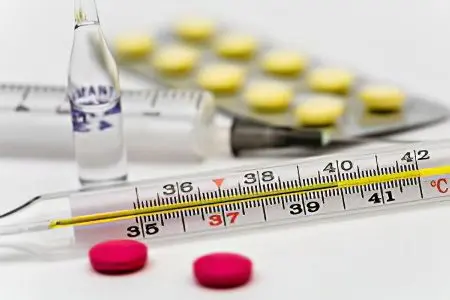
For many decades, the most popular drugs in the world have been painkillers and, of course, antipyretics. And during the period of the influenza and SARS epidemic, they are completely swept away from the shelves of pharmacies. In this article, you will find out what the chief clinical pharmacologist of St. Petersburg, Alexander Khadzhidis, says about the most popular antipyretic drugs today. He will tell you how they differ, what advantages and disadvantages they have, and how to make the right choice of medicine.
About a year ago, during the epidemic, Russian doctors urged patients not to use drugs that have been popular for more than one generation, such as Aspirin and Analgin. Paracetamol has not yet been blacklisted, but it is advised to take it only strictly according to the instructions. Our current expert does not agree with such harsh statements. Alexander Hadzhidis declares with confidence that these drugs will not harm the body if they are not abused and the correct dosage is followed:
– Paracetamol-based drugs are used all over the world today. I do not think that doctors in all countries are so illiterate that they prescribe a toxic drug to their patients.
Today, a whole group of non-steroidal anti-inflammatory drugs stands out. These are non-hormonal drugs that combine antipyretic, analgesic and anti-inflammatory properties. They will not help cure a cold or flu, but they will relieve their symptoms, making the patient feel better. Here is what Alexander Hadzhidis says about these drugs:
– There are currently only a few drugs that can cure influenza and SARS. At the same time, there is not so much benefit from them: viruses live for about 5-7 days and the use of drugs cannot shorten this period in any way. So it turns out that in any case you will get sick for the prescribed period, so you should not load the body with unnecessary medicines. But to relieve the symptoms is another matter. For a week, suffering from a headache, runny nose or high temperature is quite difficult. Symptomatic treatment will relieve you of discomfort, but it is important to remember: by removing certain symptoms, you do not treat the disease itself, you only facilitate its course. Therefore, always evaluate the risk of taking certain drugs. If your health is not too heavy, then it is better to suffer a headache than to harm yourself with medicines that still do not speed up recovery.
What are antipyretic drugs?
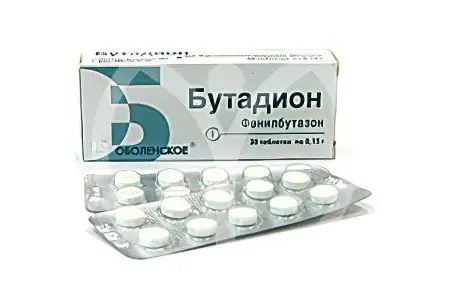
Our expert told an interesting fact:
– Today there are 15 groups of non-steroidal anti-inflammatory drugs (25 years ago there were only 8). And if there are about 150 original drugs around the world, then there are thousands of generic drugs.
When non-steroidal anti-inflammatory drugs appeared, they quickly replaced opioid analgesics and gained immense popularity in a short time. This success of NSAIDs can be explained by the fact that they do not depress breathing and do not have many other side effects that were characteristic of drugs of previous generations. And although their analgesic effect is somewhat weaker, they are still quite effective.
NSAIDs fall into two categories:
First generation drugs (they are also called “old”) – phenylbutazone (“Butadion”), indomethacin (“Movimed”, “Metindol”), diclofenac (“Diklak”, “Diclofenac”, “Voltaren”), ibuprofen (“MIG”, “Naproxen ”, “Nurofen”, “Ibuprofen”), acetylsalicylic acid (“Citramon”, “Aspirin”).
Second generation drugs, selective inhibitors of cyclooxygenase-2 (COX) (“new”, appeared on the market over the past twenty years) – a group of coxibs (etoricoxib – Arcoxia, celecoxib – Celebrex), nimesulide (Nise, Nimesil, suspension Nimulid), meloxicam (“Movalis” is a drug that originally belonged to the first generation, but later a selective effect was discovered).
— Only in the early 70s was the mechanism of action of NSAIDs discovered: they all inhibit the enzyme cyclooxygenase. In the early 90s, it became known that this enzyme has two subenzymes: cyclooxygenase-1 and cyclooxygenase-2. Naturally, the effect of drugs will depend on which enzyme they inhibit. Scientists who discovered the mechanism of action of NSAIDs received the Nobel Prize in Medicine. – the chief clinical pharmacologist of St. Petersburg comments on this point.
First generation drugs are non-selective and act on each subphenomenon, therefore, they are able to immediately have an analgesic and antipyretic effect. These include Analgin and Ibuprofen.
The side effects they can cause are typical of NSAIDs:
Oliguria (the amount of urine excreted by the body decreases)
Bronchospasm
Nephrotoxicity
Ulcerogenic effect (provokes the development of ulcerative formations)
Approximately 25% of patients experience these side effects after taking any first-generation drugs. But it is very important to understand that these drugs are dangerous not so much because of their side effects, but because we are used to taking them with or without reason. Often without special need, not observing the recommended dosage.
Finishing the topic of side effects, it is worth noting that they are not too pronounced and pass quickly enough. Often doctors do not even have time to note their presence. This leads to the fact that certain side effects may not be taken into account when prescribing the drug to patients. They themselves cannot always understand that certain manifestations are caused by the use of these drugs. Here is what Alexander Khadzhidis says about this:
– For example, after taking the drug indomethacin twice (“Metindol”), the patient’s diuresis decreases. But this effect is short-term and not obvious, so doctors simply do not have time to fix it.
Second-generation drugs have much fewer side effects. But at the same time, in the course of research and observations, it turned out that they are cardiotoxic, that is, they negatively affect the work of the cardiovascular system. This is due to the fact that the drugs have lost the antiplatelet property that was characteristic of the first generation, that is, they can provoke the formation of blood clots. Alexander Khadzhidis recognizes the presence of serious effects, but does not believe that they can manifest themselves if the drugs are used not in a course, but to relieve certain symptoms:
– In order to get rid of the symptoms of SARS or flu, you do not need to take antipyretics constantly. If you feel very unwell – take one tablet and this will be enough. If doctors prescribe regular medication for several days, then you should be wary. After all, with a single dose, the effect will be the same, and the risk of getting side effects is much lower.
Acetylsalicylic acid (“Aspirin”)

It is unlikely that there is at least one family in our country in whose home medicine cabinet there is no Aspirin.
– If I were offered to go to a desert island and take three things with me, then I would take Aspirin. It is a broad-spectrum drug: it has an antiplatelet, anti-inflammatory, analgesic and antipyretic effect, Alexander Khadzhidis says – But it is also important to know how to deal with it. If you take “Aspirin” with ARVI, it can cause damage to the central nervous system and liver. Also, very carefully you need to take the drug for those who have problems with the gastrointestinal tract.
Today, many doctors advise taking up to 150 mg of acetylsalicylic acid daily to prevent blood clots and protect the cardiovascular system. It is indeed an effective preventive measure. But, if you don’t want to test for yourself the validity of the expression “one heals and the other cripples”, then take Aspirin with alkaline drinks (the easiest option is mineral water). The drug is still acidic, and this measure will significantly reduce the risk of developing a stomach ulcer. The only thing is that the alkaline environment reduces the absorption of the drug and reduces the effectiveness of its use. So decide for yourself what is more important for you.
The development of an ulcer is a side effect that almost all NSAIDs cause when they are overused. It does not matter whether you use the form of tablets or inject. In order to reduce the risk of developing an ulcer, manufacturers try to minimize the contact of the drug with the gastric mucosa (combine drugs, release effervescent tablets). Popular today “Cardiomagnyl”, for example, combines an alkaline and acidic environment (magnesium hydroxide and acetylsalicylic acid). But this only leads to the fact that the drug becomes ineffective, since the two hostile components simply neutralize each other.
Paracetamol
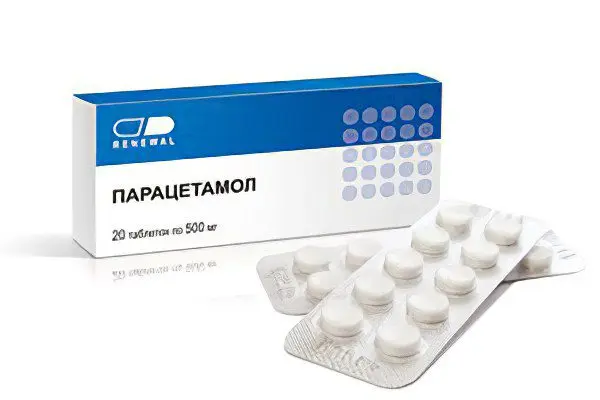
Our expert, the chief clinical pharmacologist of St. Petersburg, puts paracetamol in the first place in the list of antipyretic drugs. It does not have the added anti-inflammatory effect of many similar drugs, but it does not have many of the side effects of NSAIDs.
Alexander Khadzhidis believes that paracetamol will not cause any negative consequences at all if it is not taken systemically, but only to relieve symptoms. Only in very rare cases, a rash or tissue hypoxia may develop. Paracetamol is sometimes referred to as hepatoxic (its negative effect on the liver). But this is true only if the drug is used for a long time, exceeding all conceivable dosages. In order for the liver to suffer, you need to drink 20 paracetamol tablets of 0,5 grams at a time. Thus, you can only deliberately harm your body, since it is simply unrealistic to accidentally take such a dose.
If you do not have kidney and liver disease, then you can safely take paracetamol as an antipyretic. If you suffer from alcoholism or kidney failure, then it is better to choose another remedy for yourself. You also need to carefully combine paracetamol with other drugs that contain phenobarbital or other inducers of liver enzymes (including ethanol). Alexander Hadzhidis also warns:
– If you have any liver disease, then carefully monitor your condition with an increase in temperature and taking medications. In acute hepatitis, for example, paracetamol is much better metabolized in the liver. As a result, the amount of metabolites (toxic breakdown products of the drug) increases in the body. With cirrhosis, when all liver functions are reduced, the likelihood of a toxic effect from the drug is even higher, in rare cases a fatal outcome is possible.
To avoid side effects, use the drug once. The temperature rose – they drank the required dose. It is not necessary to take it during the day “for prevention” at all.
Metamizole sodium (“Analgin”)
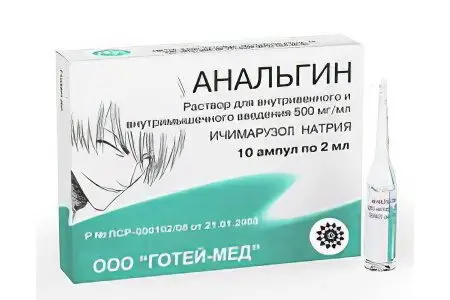
– The toxic-allergic effect of taking metamizole sodium was proven by American scientists 25 years ago. Already after the first dose, an acute allergic reaction may appear, and this does not depend on the dosage of the drug, – explains Alexander Khadzhidis, – The most allergenic drugs are penicillins. They cause anaphylactic shock in one case in five million. taking “Analgin” can cause anaphylactic shock in one case out of fifty thousand. And “Analgin”, unlike penicillins, is in every medicine cabinet and is often taken spontaneously, without observing a certain dosage, often even without special need. For reference: anaphylactic shock is a real threat of death.
Today, scientists have proven that Analgin causes agranulocytosis. Under its influence, the number of white blood cells in the blood decreases, as a result of which the body becomes defenseless against various fungi and bacteria. According to Alexander Khadzhidis, this side effect is caused not only by Analgin, but also by other drugs from the pyrazolone group. The drug relieves pain well, but even after two applications in a row it can lead to electrolyte disorders and cause oliguria, which can affect the functioning of the cardiovascular system.
– Studies have shown that the likelihood of a toxic-allergic reaction to Analgin depends on the presence of a certain genetic defect. Residents of the Balkan Peninsula do not have such a defect and calmly accept Analgin. But the Americans were forced to completely abandon this drug. But today they also returned this drug, albeit as a backup, – Alexander Khadzhidis comments on this moment.
For a long time it was believed that the only advantage of “Analgin” over other painkillers and antipyretics is the ability to use it in the form of an injection. About five years ago, another similar drug for parenteral administration appeared – Perfalgan. But its cost compared to “Analgin” is several times higher.
If Analgin is still blacklisted and disappears from Russian pharmacies and hospitals, then it will be necessary to recall such a drug as Ketorolac. It is not inferior in its effectiveness, while the risk of side effects from taking it is much less.
ibuprofen and diclofenac
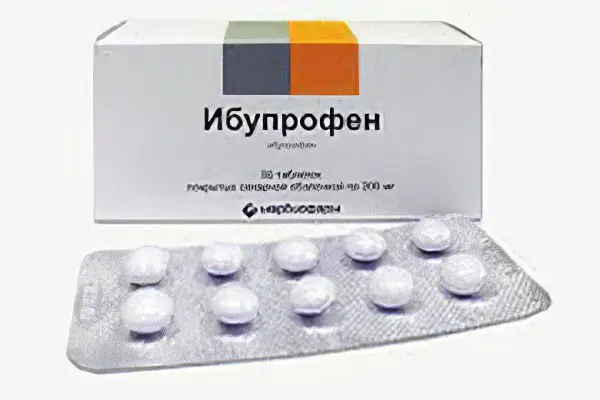
The safest antipyretic drugs are based on diclofenac and ibuprofen. Alexander Khadzhidis says about this: – In our country, for some reason, Paracetamol is taken at a temperature, and Analgin is used for pain. But this is absurd, because all NSAIDs have both antipyretic and analgesic effects at the same time. I started teaching 20 years ago and even then I told my students that soon Aspirin would be replaced by new, more modern drugs. And indeed they appeared, they are simply not positioned as antipyretics. An example is Voltaren, which, few people know about it, effectively knocks down high temperatures.
Taking combination drugs, according to our expert, should be done with caution. They are effective, but they will have much more side effects. One of the brightest examples of such drugs is Pentalgin. It contains pheniramine maleate, paracetamol, naproxen, caffeine and drotaverine and, therefore, all the side effects inherent in these components. Some combined preparations contain phenobarbital and paracetamol, which is not advisable, since the toxicity of paracetamol increases significantly under the influence of phenobarbital.
Alexander Hadzhidis told us that NSAIDs will not help with headaches or toothaches. If you suffer from pain that is caused by bursitis or arthritis, then you need to choose the drug that has the strongest anti-inflammatory effect (drugs based on diclofenac win in this indicator).
Widely known thanks to the advertising “No-shpa” and “Drotaverine” do not relieve pain, which is inflammatory in nature. These drugs are not used at all anywhere in the world, except for Hungary and Russia.









